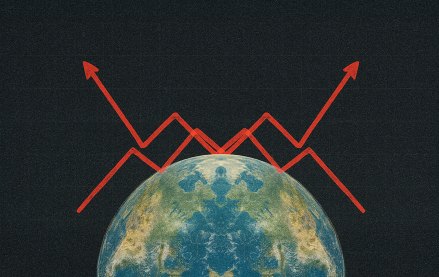Media Buying Briefing: Comparing/contrasting Publicis’ and Omnicom’s 2024 results and fortunes ahead

This Media Buying Briefing covers the latest in agency news and media buying for Digiday+ members and is distributed over email every Monday at 10 a.m. ET. More from the series →
As 2024 financial results start to trickle in over the month of February, the two leading agency holding companies’ numbers are out, and their results tell a variety of stories. But the bottom line takeaway, which really has little to do with the actual results, is this: The big will continue to get bigger, no matter the price.
And any client that isn’t a multinational advertiser spending at least half a billion in media spend is unlikely to get the attention it will want from those holdcos — a truth that has independents and smaller holdcos licking their chops at what they hope will be a windfall of client defectors from the giants.
First off, let’s look at the results of both Publicis, a holding company that firmly declares its period of transformation mostly behind it, and Omnicom, which is about to become the largest holdco in the world but is in the process of swallowing rival Interpublic Group, a task that may require no small amount of corporate Pepto Bismol to properly digest.
Publicis ended 2024 up 8.3% in total revenue and up 5.8% in organic growth, and hit a healthy operating margin of 18% — all impressive numbers. More importantly, CEO Arthur Sadoun said he expects to keep growing at 4% to 5% in 2025. The French holdco’s stock has gained slightly since the beginning of the year.
Omnicom ended the year up 6.8% in total revenue and up 5.2% in organic growth, with its operating margin at a less robust but still healthy 15.5%. The holdco’s main challenge for 2025 is the absorption of IPG, which Omnicom chairman and CEO John Wren said is expected to cause revenue to shrink 3.7%. (IPG will announce its full results on Feb. 12.)
Omnicom’s challenges ahead
Steve Boehler, who runs agency consultancy Mercer Island Group, said he sees more trouble ahead for Omnicom than for Publicis — but he thinks both holding companies will likely experience smaller client defections over time due to not being serviced like the multinational giants. And for Omnicom especially, the Pepto will be flowing generously.
“For the next 12 months, it’s going to be a horrific mess, and for the some period of time after that, it’ll still be quite messy” for Omnicom, said Boehler, whose own calculations call for some 10,000 people to lose their jobs across both Omnicom and IPG. “There’s ingredients in [Omnicom’s] mix that they believe they can sell to IPG clients. But I’m not so sure the IPG clients are begging for that stuff. … One of the challenges is the plan to sell stuff that the market isn’t screaming for necessarily, or that they can’t get somewhere else. They’re going to undoubtedly cause huge amounts of disruption to their existing client bases.”
Why is Boehler so sure Omnicom and IPG will lose clients? “It was crystal clear from the messaging that was used in the earnings call, that the complete focus of this is on large, mostly global clients — that’s what they want,” he said. “Most of their clients are not in that class. And so if I was most of their clients, I’d be wondering, ‘Why am I not hearing about myself?’”
Scott Shamberg, CEO of Mile Marker, a new independent agency formed from two other shops, who also is a refugee of the holding company system, said he expects the holdcos to essentially “eat each others’ lunch,” and that spells opportunity for him.
“Those holding companies are going to continue just to cannibalize each other,” he said. “They’re going to keep pitching against each other and taking from each other in the hopes that business turns over every two years.”
In Omnicom’s earnings call last week, chairman John Wren laid out a plan to streamline positions across both holdcos down to even regional jobs, “eliminating duplicative overhead, back-office and third-party expenses across our larger combined global footprint,” as he explained. “With unified Practice Area leadership teams at the global, regional and country levels, we will eliminate redundant roles, functions and back-office operations, which we expect will generate cost savings exceeding $130 million,” he added.
Shamberg said he understands the need to trim costs due to client pressures exerted by procurement, but trying to grow by cutting serves as a double-edged sword. “I believe there’s got to be a balance between this race to the bottom on price, for which some clients can sometimes be culpable, and the strategic direction and guidance they need when an agency can’t staff it properly with human expertise,” he said. “That’s one of the conundrums in the agency client relationship model right now, and I think Omnicom’s feeding into that.”
To Boehler’s ears, if a client has to endure “the disruption of what will undoubtedly be lost head count, staff I liked, potentially my agency brand being merged into another agency brand, all of that nuisance — it impacts the client, their day-to-day service and potentially the relationships they had,” he said.
Is there any upside? “There’s some market forces that are that are in their favor — the concentration on the media side is not good for clients,” Boehler added. “But there is a scale that puts them in rarefied air, and gives them added ability to play their principal buying games and to make money. And of course, the street wants them to make money.”
Different but still the same
In announcing Publicis’ 2024 results, Sadoun proudly declared, “We are ending the year in the No. 1 position across the board, growing three times faster than our holding company peers, and five times faster than the IT consultancies.” Sadoun said he expects the transformational work the holdco has undergone makes him “confident in significantly outperforming the industry in 2025 for the sixth year in a row.”
All the confidence in the world may not prevent Publicis from experiencing its own potential client defections, said Boehler. And though its transformation is largely complete, Sadoun and co. keep buying other shops like Influential and Mars United Commerce, which still require integration.
Publicis may be “ahead organizationally in this evolution towards having a maniacal focus on only the largest clients, and on being as big as you can so that you can deal with big media,” said Boehler. “At the end of the day, nobody seems concerned about the mid market, which is where most of the clients are and which, frankly, is where most the advertising revenue is.”
Another problem is that size — and the ability for both holdcos to pursue an even bigger principal media strategy — gives them more of an advantage in linear and traditional media, but far less traction against the tech platforms. The fact is, the Googles, Metas and Amazons won’t really be affected by the increased clout of Omnicom Advertising Group or Publicis. In fact, they’re no longer even frenemies — they’re out-and-out competitors for brand dollars and media spend.
The last word
It’s an interesting tell that Sir Martin Sorrell, S4 Capital’s chairman and inarguably the saltiest executive in the agency world, has flipped his opinion on the wisdom of Wren to purchase IPG. Speaking at the Ad Tech Economic Forum in London last week, Sorrell observed that, if Publicis indeed passed on purchasing IPG, run by Philippe Krakowsky, then “Krakowsky caught Wren with his trousers down.” It’s an interesting turn of opinion from Sorrell who had originally declared Wren a “wild old fox” at the deal’s announcement in December.
Color by numbers
As streaming sucks up more and more of TV viewers’ time, the expectation is that trend will continue as more sports content finds its way onto those platforms (looking at you, Tubi, having just been the first free streamer to carry the Super Bowl yesterday). So who’s winning the most of their time? According to a longitudinal tracking poll of 7,000 U.S. consumers age 18 and up from research firm MX8 Labs, 2024’s winner remains veteran Netflix as the most-watched platform among 72% of respondents, but it also ranked highest for overall experience, content appeal and ad experience. Other interesting stats:
- Tied for second place behind Netflix were Prime Video and YouTube at 63%, followed by Hulu (56%).
- Tubi was the most-watched FAST channel at 30%, with The Roku Channel close behind (25%) and Pluto TV in third (20%).
- Asked to recall specific brands they had seen, viewers cited Hulu and Netflix the most, with 27% of people able to name brands.
- But for younger viewers 18-24, Paramount+ delivered 37% recall of specific brands mentioned in ads, notably higher than the overall 22%.
Takeoff & landing
- Horizon Sports & Experiences acquired Strategic, a sports, lifestyle and entertainment marketing agency. Peter Stern, Strategic’s founder and president, will join HS&E as chief growth officer.
- Havas acquired a majority stake in Channel Bakers, en e-commerce and retail media specialist media agency based in L.A. Terms of the deal weren’t disclosed. It will sit in Havas Media Network’s Havas Market unit, which specializes in e-commerce.
- Personnel news: Dentsu has been on a hiring tear of late. The holdco named Beth Ann Kaminkow CEO for North America , coming over from VML where she was global chief commerce officer and CEO of VML New York. She starts in June. Dentsu also promoted Jeff Greenspoon to be its new global chief client officer, while keeping his duties as chief business officer for Dentsu Americas. Finally, Dentsu’s Merkle hired Missy Foristall as its new COO, who was most recently global COO and Americas CEO at Dept … We Are Social tapped ex-Forsman & Bodenfors CEO Toby Southgate to be its new global CEO … OOH firm Outfront named industry veteran Nick Brien to be its interim CEO.
Direct quote
“We view live [sports] differently, and everything we do in sports marketing is in some way, shape or form, defined by the live event that we’re looking to build a platform around. Live is everything for us, and being able to understand how audiences interact with with the live environment goes beyond just the feed, whether it’s digital, linear or whatever the consumption point is.”
— Jeremy Carey, chief investment officer at Optimum Sports, about the importance of live sports to clients.
Speed reading
- Julia Tabisz assembled Digiday’s latest research into agency attitudes about 2025 client media budgets, finding they’re worried about budget rollbacks but remain optimistic.
- Krystal Scanlon looked at how the longer uncertainty remains about TikTok’s status in the U.S., the more YouTube stands to gain via its Shorts offering, which is rapidly growing its revenue.
- Related to TikTok’s uncertain status, Antoinette Siu explained why Snapchat isn’t necessarily benefiting, due to marketer caution in spending on the platform.
More in Media Buying

In Graphic Detail: What to expect in media in 2026
Programmatic mix will broaden, while AI investment will both drive ad investment and steal focus from other marketing priorities.

As industry anticipates AI search ads, buyers scrutinize Google’s AI Max
Media buyers report mixed results with the AI-powered search ads toolset.

AdsCopilot offers agencies an AI overlay at no cost
It functions as a real-time, AI-powered assistant directly within the user’s web browser, overlaying and interacting with existing ad platforms that media agencies use.








